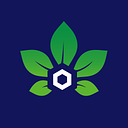AgTech IoT Optimization
IoT technology is an important platform for tracking goods. The development of IoT technology has made it possible for many objects to connect to the Internet to communicate with each other without human intervention. IoT reduces human data entry and uses a variety of sensors to collect data from the environment, allowing automated storage and processing of all data. IoT can provide important information, such as temperature, speed, and other indicators at all stages of production, transmission and supply.
IoT smart devices can collect and transmit the traceability data needed in the business process. The traceability information available can be stored in a blockchain-based traceability system. The traceability information may include farming background environment (e.g. soil, water, temperature and humidity quality), farming staff, date, time, origin and application of drug variety, irrigation, fertilizing and pesticides. Startups such as FILAMENT have used blockchain technology to broadcast information obtained from IoTs such as weather data, SMA alerts, machinery protocol and GPS positioning on the farm to support precision agriculture and improve transparency. Aside from agriculture, IoT integrated with blockchain frameworks can also support sustainable aquaculture practices by monitoring rearing conditions (temperature sensors, water level sensors, oxygen sensors, and pH sensors)for monitoring any environmental changes and actuators (water pump, pond heater, fish feeder, and lighting LED) for regulating the corresponding environment.
IoT applications support farmers during crop planting, irrigation, crop processing, harvesting and post-harvest, crop storage and transportation, and many other benefits in agricultural IoT systems. Soil moisture sensors, humidity sensors, leaf moisture sensors, solar radiation sensors, infrared light sensors, and rainfall predictors are among the field sensors used in IoT-based systems. In IoT scenarios, sensors can be installed in a variety of locations, including greenhouses, seed banks, cold rooms, agricultural machinery, transportation systems, and livestock, and the data collected can be processed in the cloud for monitoring and control.
While IoT devices do not need geo-spatial information to function, the inclusion of geo-spatial information can both help establish agricultural commodity origins and learn more about cultivation site conditions. Incorporating geo-spatial data, especially from earth observation (EO) data can identify not only the origins of cash crops such as oil palm but also identify their spread to identify the impact on deforestation.
IoT can provide farmers with information on crop yields, soil temperature, pest infestation, and soil quality that is essential for high crop production and provides precise data that can be used to improve farming techniques. Crop tracking can be performed effectively to track crop growth and record growth information. The integration of blockchain with Internet of Things (IoT) for real-time monitoring of physical data and tracing based on the hazard analysis and critical control points system (HACCP) has recently been proposed.This is particularly critical for the maintenance of the cold-chain in the distribution logistics of spoil-able food products. As an example, ZetoChain performs environmental monitoring at every link of the cold chain, based on IoT devices.
Drones simplify supervision tasks for farms by being able to cover hundreds of acres in one flight, gathering, thanks to infrared technology, multi-spectral images and a wide variety of information about the condition of the land, irrigation needs, crop growth, the existence of pathogens, and, in the case of cattle, the number of animals, their weight and possible anomalies such as lameness or unusual movements.The use of drones in the agriculture industry is steadily growing as part of an effective approach to sustainable agricultural management that allows agronomists, agricultural engineers, and farmers to help streamline their operations, using robust data analytics to gain effective insights into their crops. Crop monitoring, for example, is made easier by using drone data to plan accurately and make ongoing improvements, such as the use of ditches and evolving fertilizer applications. Products can be accurately traced from farm to fork using GPS locations for every point in the journey, rather than more traditional time and labor-intensive data collection. Precision agriculture practices, which can help farmers make better informed decisions, have evolved significantly over recent years, with the global market now estimated to reach $43.4 billion by 2025. While drones, also known as unmanned aerial vehicles (UAVs), have not yet made it into the mainstream agriculture space, they are playing an increasingly important role in precision farming, helping agriculture professionals lead the way with sustainable farming practices, while also protecting and increasing profitability.
For example, DroneSeed is a startup that uses drone technology for crop planting and more. Unmanned aircrafts can also spray fields with water, fertilizers or herbicides, reducing costs, manual labor and time spent on these processes.
Join the AgriNode Community:
